Bored and looking for ways to have fun outside for cheap? Foraging might be for you! All it takes is knowledge and time to explore the wide variety of beautiful, edible plants all over the KW region.
Here is a mini field guide of some in-season, locally found plants (and a few key species to avoid!)—chances are, a few of these are in your yard right now!
Wild Strawberry Fragaria Virginiana

This friendly plant grows close to the ground and blooms beautiful white flowers in the spring that erupt into juicy, red jewels in June/July Their taste is almost indescribably sweet, but did you know that you can eat the leaves as well? They have a pleasant, mild flavour and contain lots of fiber and vitamin C. You can identify this plant not only by its signature red fruit, but also by its tri-patterned leaves that grow along long ground-trailing stems (called ‘stolon’) and have a soft appearance, with distinctively pointed edges.
Ground Ivy Glechoma Hederacea
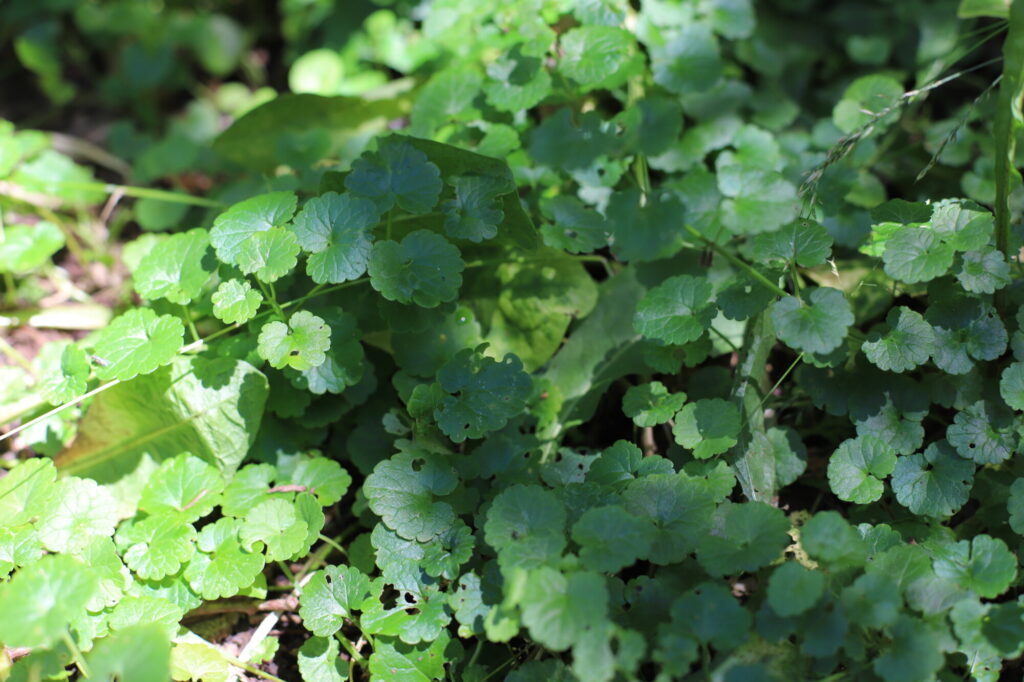
Sometimes referred to as “Creeping Charlie” this mint-like plant is often the bane of most gardeners because of how aggressively it spreads and how difficult it is to get rid of. However, it is a lovely addition to any tea and other dishes where mint would be appropriate. It can be identified by its small, round, scallop-edged leaves that grow opposite each other in groups of 4. The plant should also smell strongly like mint or lemon balm when picked.
Broad leaf Plantain Plantago Major
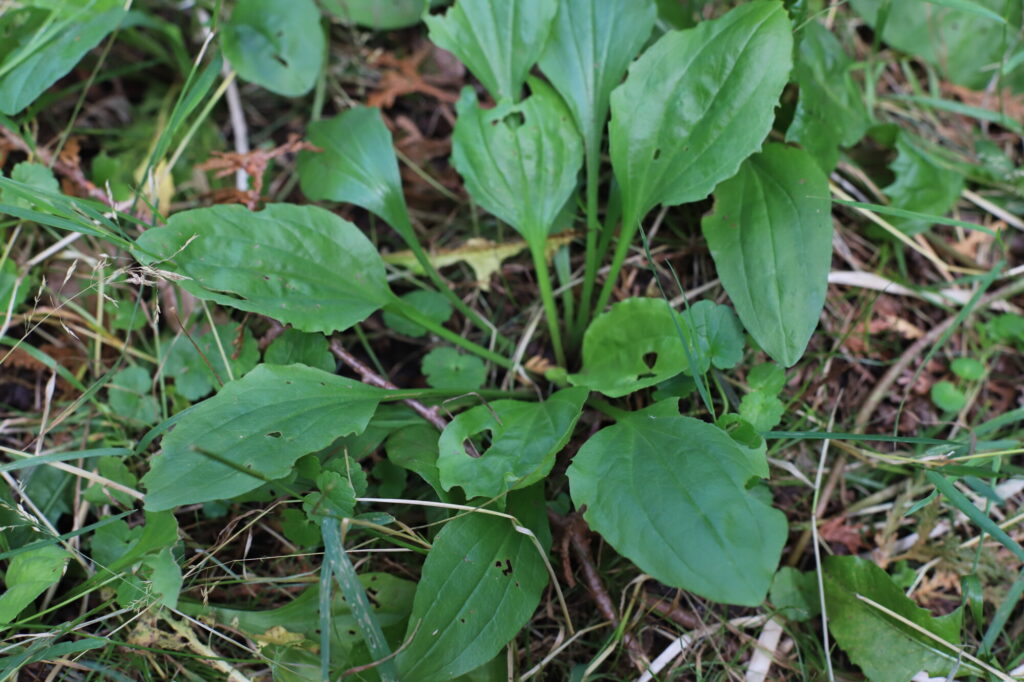
Extremely common, nutritious, and easy to identify. Broadleaf (and its sister species, Narrowleaf Plantain) have a mild, vegetal flavour similar to broccoli or spinach. They can be identified by their wide leaves that grow in a rosette on the ground, deep vertical lines tracing from where the stem meets the leaf to the leaf’s edge, and long, internal fibers.
Creeping Woodsorrel Oxalis Corniculata
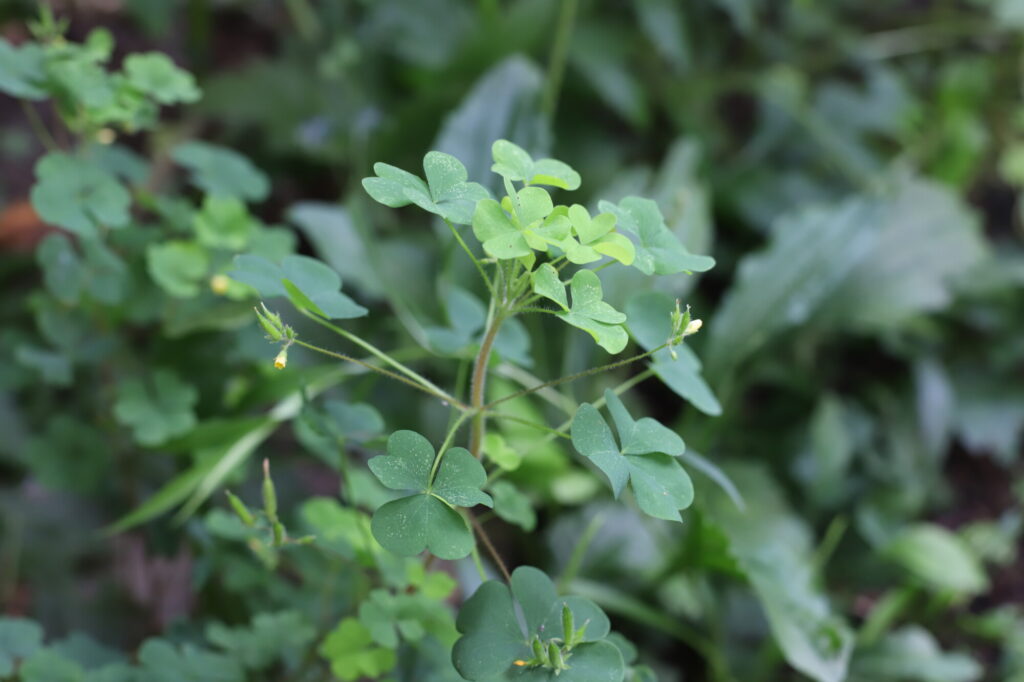
These plants look like clovers and taste like lemon candies—what more do I need to say? They’re told apart from their lookalikes by their slightly yellowish colour and lack of white chevrons on their leaves. These sweet little yellow flowers, seed pods and leaves should be eaten raw in moderation and are safer when cooked (their sour taste lends well to soups and teas).
Wild Grape Vitis Ripari
While the familiar purple or green fruits won’t be ready until the fall, you can still get your grape fix from the leaves. Grape leaves can be identified by their shark-tooth edges and broad, heart-shaped size. They’re shinier and more pointed when young and become matte and soften as they grow—try to pick them in between these stages, for the best balance of size and flavour potency.
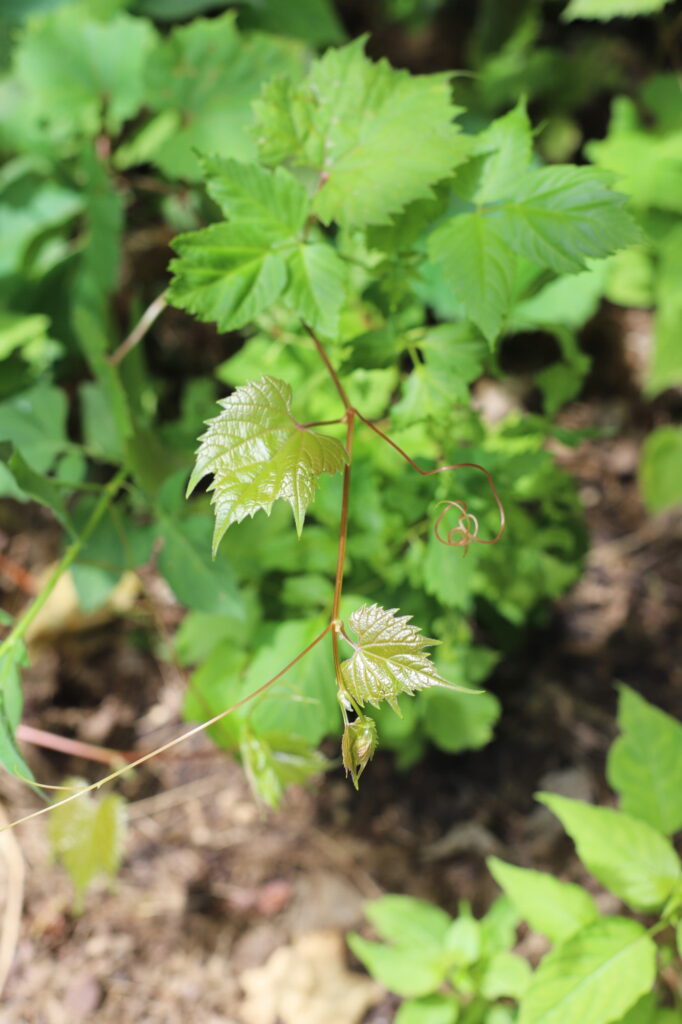
PLANTS TO AVOID
Pokeweed Phytolacca Americana
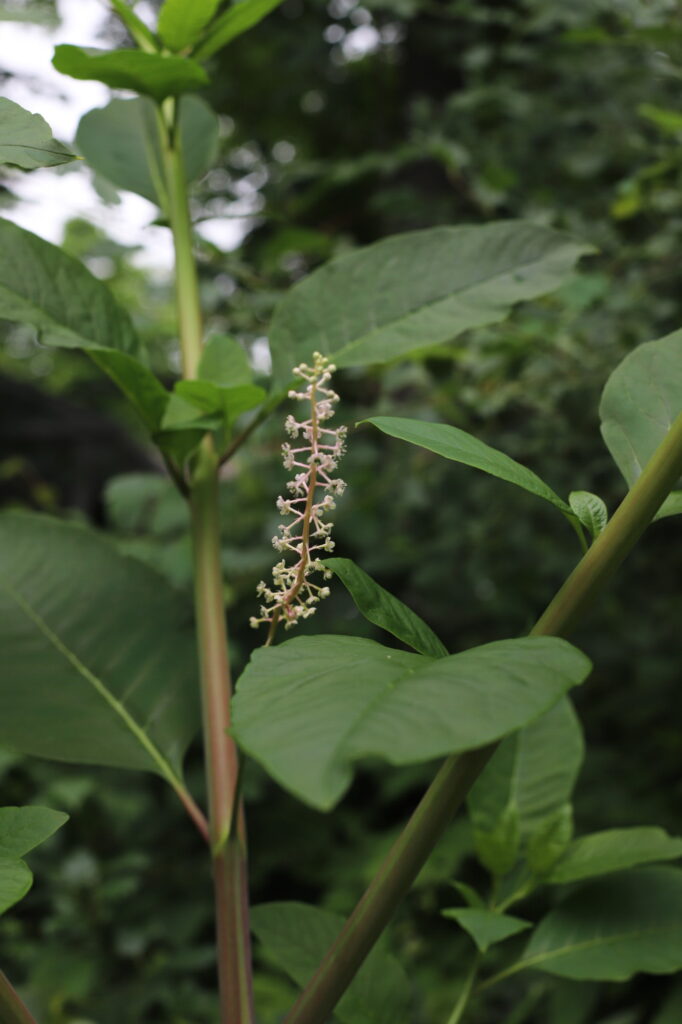
Though these fantastical alien-like stalks can, in certain circumstances, be used by veteran foragers, they are also extremely toxic and should be completely avoided by beginners. Even touching the roots without gloves can transfer toxicity, though even part of the plant is dangerous and should be avoided with equal care. Uproot with gloves and tools if spotted near your home.
Bittersweet Nightshade Solanum Dulcamara
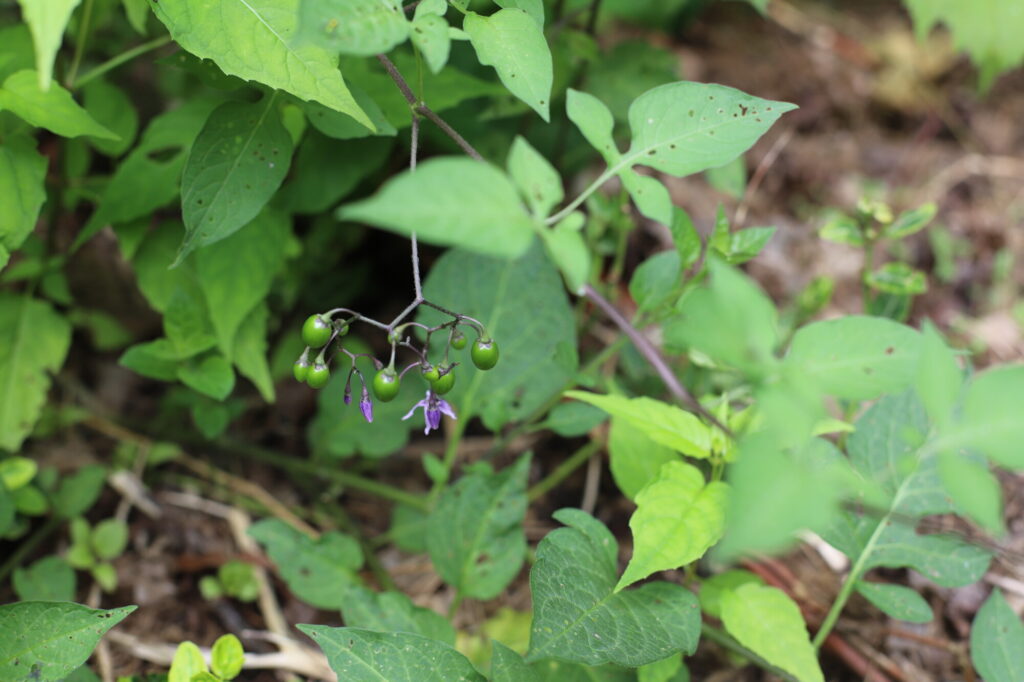
These beautiful vines produce cute purple flowers and toxic oval shaped berries that turn from green to red. Avoid eating any part of it.
CAUTION!
It’s not safe to touch, harvest or eat any plant you’re unfamiliar with! Make sure to know what you’re picking and take precautions before foraging to avoid being hurt by toxic weeds or mushrooms .




Leave a Reply